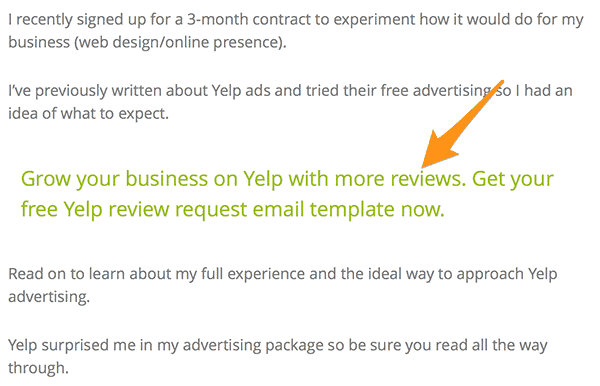If you blog for yourself or your business chances are you want people to stick around for more than just one post. You want to decrease blog post bounce rate as much as you can so people stick around.
Visits to your website are important. Valuable visits to your website are more important.
Valuable visits to your website will provide you with more value to your business. Decreasing bounce rates is a good way to increase the value of visitors.
Before I get into the details about the two strategies to decrease blog post bounce rate, I need to set the stage.
What Is Bounce Rate
If you found this blog post on Google I’m sure you know what bounce rate is because you’re looking for it.
For those who don’t though I must give a quick explainer on what bounce rate is and why it’s relevant to your blog (and website).
The bounce rate is always displayed as a percentage. That is a percentage of visitors to your website.
Your total website bounce rate is the number of people who visited your website, viewed one page, then left your website. The lower the percentage the better.
A Typical Bounce Rate
There’s no such thing as a typical bounce rate. I can give you a general idea of where yours might lie but yours will be unique.
You might have a bounce rate anywhere from 10% all the way up to 90%. It depends on your industry and the content of your page. There’s a website bounce rate average for your overall website and then each page has its own bounce rate.
Some eCommerce stores have extremely low bounce rates whereas a site where people are looking for information (like a blog) may have a high bounce rate.
Here’s an example of an eCommerce website from one of my clients:

People are either looking at a lot of products or they’re adding products to their cart and checking out. Whatever they’re doing it translates into a low bounce rate which is great.
For informational websites or services websites where people visit with a single goal, the bounce rate could be higher. For my website, it’s much higher than eCommerce.

That’s a more than double the bounce rate but it’s still perfectly fine. It all depends on your industry and website content.
I would say that a bounce rate anywhere above a 90% isn’t great but again it depends on your website. A landing page will probably have a bounce rate over 90% and that’s fine also.
Decreasing your bounce rate is always a good thing and a goal you should always keep in mind if it fits your purpose.
In other words, don’t sweat your bounce rate but do try to decrease it if you can and it makes sense to do so.
So then how do you reduce the bounce rate?
Great question!
Two Strategies To Decrease Blog Post Bounce Rate
When you want to decrease blog post bounce rates there’s no end to the strategies you can test. That’s why I’ve picked two of the most important that you should always work on.
While you can start with these two strategies there are always a number of others to try. I’ve even written about other strategies to reduce website bounce rates. There are also poor strategies that will increase leads but at the same time increase bounce rates such as website welcome mats.
You have awesome blog posts but there’s more to it than that.
I’ve identified these two strategies as the most effective at decreasing your blog post bounce rate. This is where you should start.
1) Give them something awesome
People come to your website for a reason. They need to accomplish something whether it be to solve a problem or learn something new.
If they find what they’re looking for on your website then you’ve done a great job. What you’re missing is turning that visitor into a lead.
They found something good on your website. That’s great for them but not so good for you. You’re hoping to get something more from visitor than just a single isolated visit.
You’re giving them something good already but to turn a visitor into a lead you have to give them something awesome.
Whatever they came to your site looking for, offer them something that adds even more value!
That’s why lead magnets are so important. Visitors come for one reason but stay (and become a lead!) longer with something awesome that you’re offering.
Good content helps attract but great content helps bring in the lead. That’s why content marketing brings in such valuable leads.
If a visitor came for information about how to change the oil in a car you have a good prospect. If you have an easily printable oil change checklist to download then you’re likely to get a valuable lead.
Inline call to action
Set up a landing page for your lead magnet and put an inline call to action in your blog post. You’re almost guaranteed to decrease your bounce rate AND get a valuable lead in the process.

If you have a popular blog post and create a relevant landing page with a lead magnet then you’re sure to decrease your bounce rate. That’s not even the best part. You’ll also increase lead generation. They’ll be valuable leads too.
Giving visitors something awesome is the best way to decrease bounce rates but there is another excellent way to do it.
2) Provide contextual links
Many people come to your website to solve a problem. If you have what they need then they’ll probably leave without looking around.
There’s also a large group who come to your website to learn something. They want to absorb a piece of your knowledge and learn what you have to teach.
Those are people who are primed for more content. They’re anxious to learn more so if you give them more relevant (and interesting) content then they’re going to be interested.
Providing visitors with links to your other content where it makes sense is a good way to get people to click around. Not only will this decrease blog post bounce rate but it’s great for search engine optimization. The better your content is linked the easier it is for search engines to index.
Notice how these strategies have great side benefits too?
If you’re reading about setting up your Yelp profile then you’re sure to be interested in how to make sure your customer reviews make it through the filters.
See what I did there?
The more cross-linking you do in your blog posts the more people will read. Everything you link to should provide context or be related in some way. You can’t just link willy nilly or your links will look spammy and then nobody will click them.
Those advertisements that create links out of words to send you to an ad are no good. Don’t do that.
Good blog post ideas is a start but the two strategies I outlined will step up your blog post performance significantly.
More Value, More Visitors
These two strategies will have a big effect on decreasing your blogs bounce rate. They’ll also have the added benefit of increasing the likelihood visitors will convert to leads.
Your business website is more than a place to tell customers you exists and you want them to buy from you. In fact, that won’t work at all similar to walking into a room and saying buy from me.
A business website is all about building trust with your potential customers. Helpful content is an important part of that and so is showing you’re the expert in your industry.
Providing valuable information helps bring traffic. Decreasing bounce rates helps improve the traffic you get.
Both of these combined will turn you into an expert and build trust with customers while building valuable traffic to your website.



